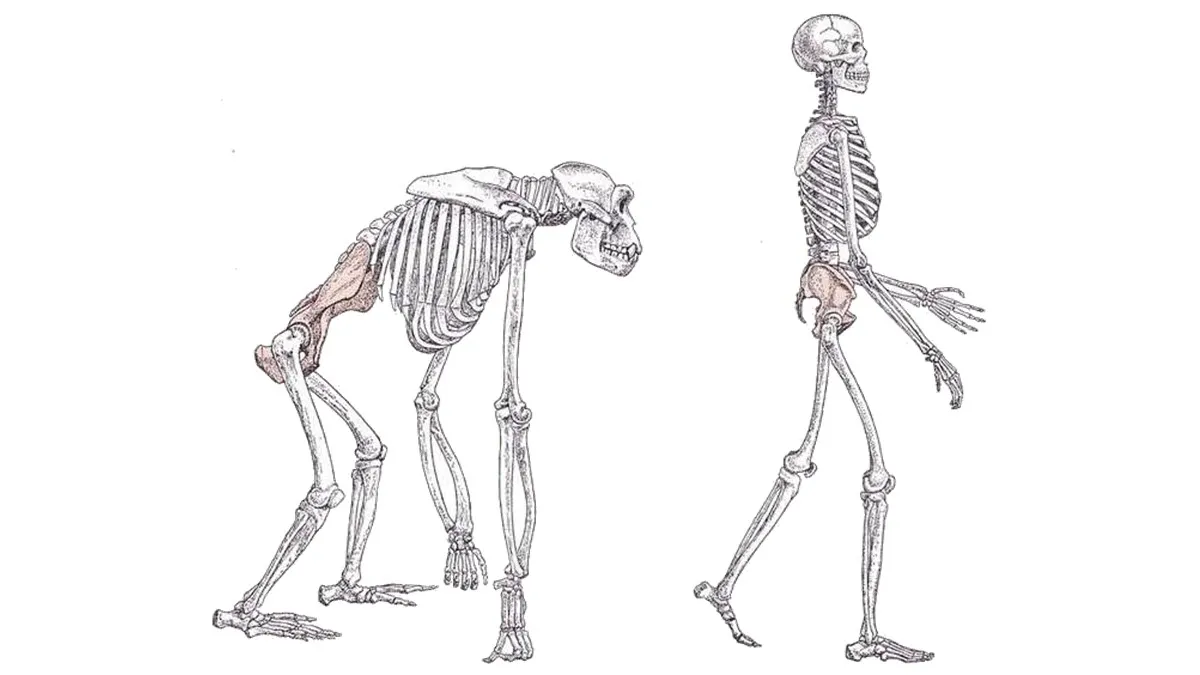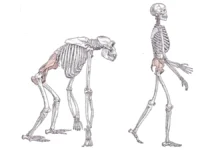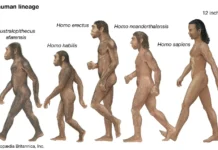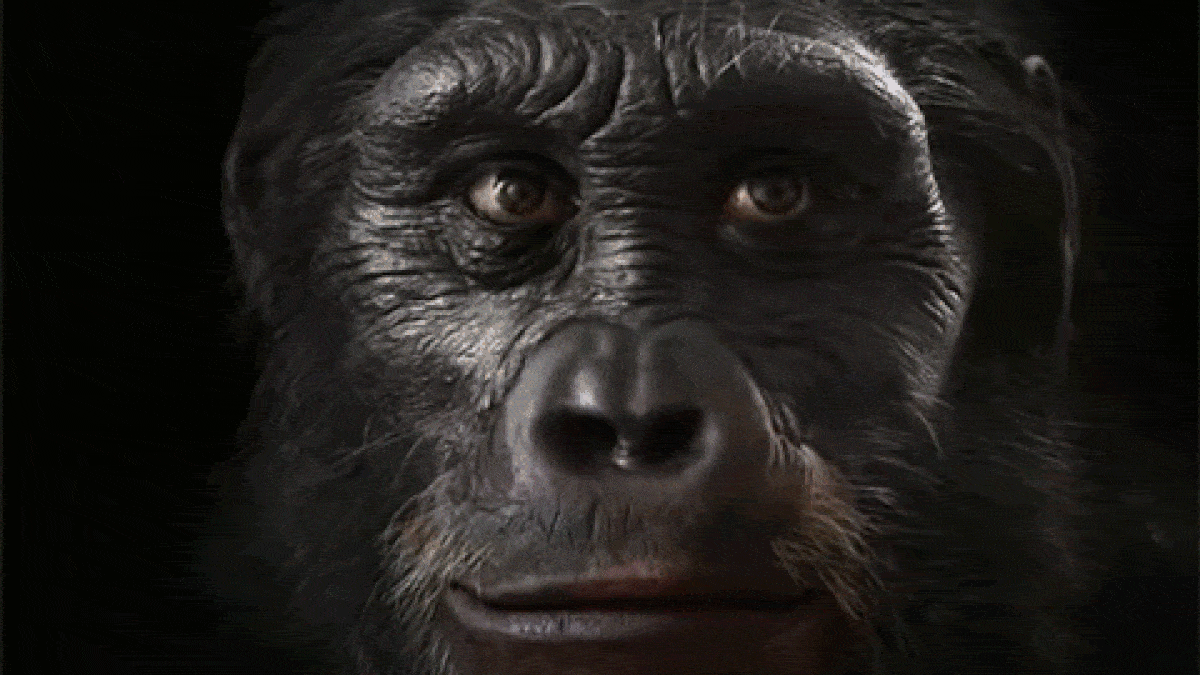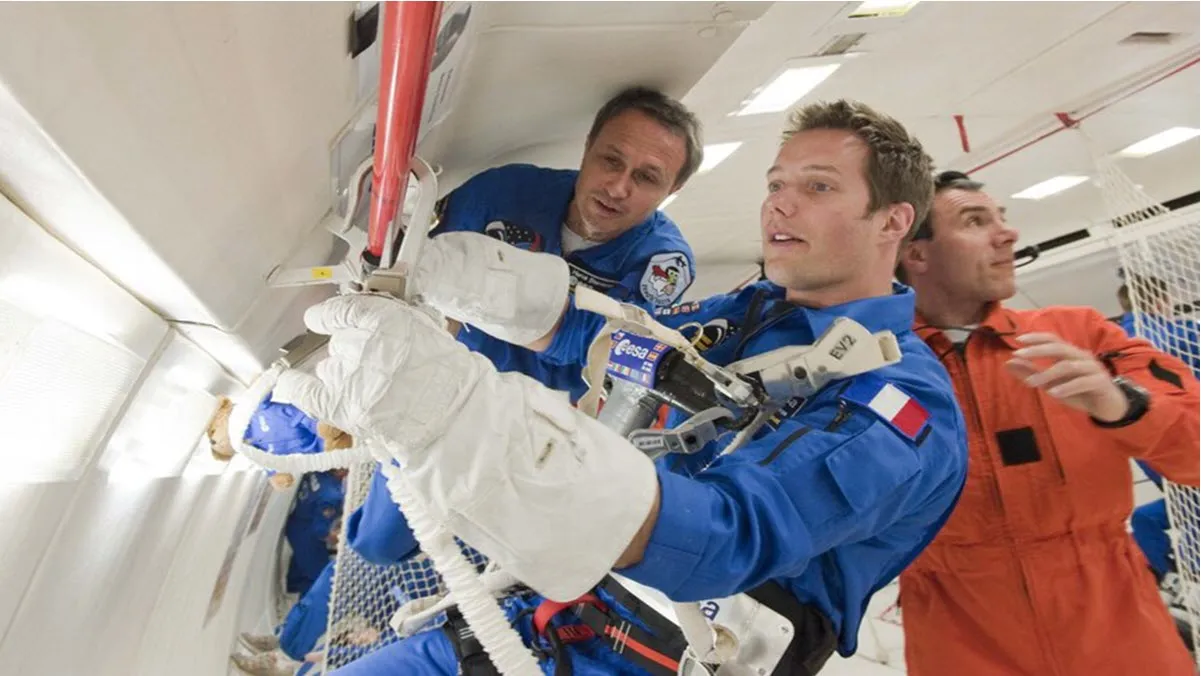Introduction
The evolution of bipedal walking in humans has been a fascinating journey through time, marked by significant anatomical and biomechanical adjustments. Among the crucial muscular structures involved in this transition, the iliopsoas stands out as an essential protagonist, playing a key role in coordinating movements of the hip and spine. This text will explore in depth the evolution of bipedal walking, highlighting the central role of the iliopsoas. We will examine its adaptations through evolution, its impact on biomechanics, and its contribution to modern human locomotion.
The evolution of bipedal walking represents a major chapter in the evolutionary history of hominids. Our ancestors, originally adapted to quadrupedalism, gradually evolved towards bipedalism, marked by major anatomical changes. These transformations were favored by the liberation of the upper limbs, allowing their use for varied tasks, and also involved complex adjustments at the level of the lower limbs.
At the heart of this transition, the iliopsoas emerges as an essential player. Made up of the iliacus muscle and the psoas major muscle, the iliopsoas extends from the lumbar spine and pelvis to the thigh, playing a major role in hip flexion. This action is crucial in the movement of bipedal walking, contributing to the elevation of the lower limb during the swing phase.
The adaptations of the iliopsoas during evolution are remarkable. The length of the femur was a key element, affecting the muscle leverage of the iliopsoas. These adaptations allowed more efficient use of muscular energy, thus promoting economical locomotion. Additionally, neuromuscular control of the iliopsoas has evolved to ensure precise coordination with other muscle groups, ensuring stable balance during bipedal walking.
The iliopsoas plays a crucial role in coordinating movements of the hip and spine. During bipedal walking, it actively participates in spinal flexion, thus contributing to a smooth and efficient stride. By working together with other hip muscles, it provides the stability and mobility necessary for human locomotion.
The impact of the iliopsoas on the biomechanics of bipedal walking is notable. As the primary driver of hip flexion, it directly influences stride length and lower limb position during walking. Its coordinated contractions with other muscles participate in the efficient transmission of muscular force throughout the gait cycle.
In modern human locomotion, the iliopsoas continues to play an essential role. Its evolutionary adaptations contribute to the stability and efficiency of walking, while its involvement in hip flexion remains crucial. Understanding the central role of the iliopsoas offers important perspectives for rehabilitation and the understanding of contemporary gait disorders.
Thus, the evolution of bipedal walking has been a complex process, marked by anatomical and biomechanical adaptations. The iliopsoas, as a key player, has undergone evolutionary adjustments to meet the demands of bipedalism. Its impact on biomechanics and contribution to modern human locomotion highlights the crucial importance of this muscular structure in our ability to walk stably and efficiently.
The evolution of bipedal walking: A major transition
The transition from quadrupedalism to bipedalism represents one of the most significant moments in human evolution. Our ancestors, initially adapted to quadrupedal locomotion, undertook a major transition towards bipedalism, characterized by an erect posture. This change had profound implications on the morphology and function of the human body, marking the beginning of a distinctive march and influencing the trajectory of human evolution.
Initially, our primate ancestors shared a quadrupedal adaptation with many other mammals. This posture involved four-limbed locomotion, with equal weight distribution between the fore and hind limbs. However, over the course of evolution, selective pressures favored the transition to bipedalism, a key characteristic that distinguishes hominids.
Bipedalism offered distinct advantages, freeing the upper limbs from supporting function and allowing the development of more advanced manipulative abilities. This liberation of the upper limbs was crucial for the emergence of complex tools and gestures, thus contributing to the development of human intelligence and culture.
This major transition was facilitated by a series of anatomical adaptations, particularly in the lower limbs and pelvis. The enlargement of the pelvis was crucial to accommodate changes in body position during bipedal walking, also influencing the process of birth in hominids. The bones of the lower limbs have undergone modifications to support the body’s weight more efficiently, with a transformation of the feet and legs for more stable and energy-efficient walking.
The adaptation of the human foot has been particularly important in the transition to bipedalism. The arch of the foot has developed to provide dynamic support and absorb shock when walking. The toes shortened and the arches of the foot expanded to better meet the demands of bipedal walking, providing a solid platform for propulsion and balance.
The transition to bipedalism also had implications for the spine, which underwent adjustments to maintain balance during upright walking. The curvature of the spine has changed, allowing for optimal weight distribution and minimizing stress on the vertebrae during bipedalism.
These anatomical adaptations have been shaped by evolutionary pressures to meet the new challenges and advantages of bipedalism. Bipedal walking opened up new ecological opportunities, allowing hominids to navigate more efficiently in diverse environments. It also contributed to the development of unique characteristics, such as the ability to transport objects and explore new ecological niches.
So the transition from quadrupedalism to bipedalism was a major turning point in primate evolution, marking the beginning of a distinct feature of hominids. Anatomical adaptations in the lower limbs, pelvis and spine have enabled this transformation, freeing the upper limbs for more complex functions. Bipedalism played a fundamental role in the development of modern human walking and has had profound implications for the evolutionary trajectory of our species.
The iliopsoas: Anatomy and Function
The iliopsoas, a term that encompasses two distinct muscles, the iliac muscle and the psoas major muscle, is a crucial muscle group in the pelvic and lumbar region. This anatomical combination plays an essential role in hip flexion and is fundamental for many physical movements and activities.
- The iliac muscle:
- Origin: The iliacus muscle originates from the iliac bone, the upper part of the pelvis.
- Path: It descends towards the lower abdomen towards the spine.
- The psoas major muscle:
- Origin: The psoas major muscle finds its origin at the level of the lumbar vertebrae, more precisely at the T12-L5 levels.
- Path: It goes towards the bottom of the spine, passing through the pelvic region.
These two muscles combine to form a common tendon that inserts onto the minor trochanter of the femur, located on the thigh bone. This common insertion demonstrates the common contribution of the iliopsoas to hip mobility and lower limb movements.
Main functions of the iliopsoas:
- Hip Flexion: The most significant action of the iliopsoas is hip flexion. When it contracts, it pulls the femur forward, allowing movements such as walking, running and climbing stairs.
- Spinal Stabilization: In addition to its role in hip mobility, the iliopsoas helps stabilize the spine during various activities. It also participates in lateral flexion of the spine.
- Postural support: When standing, the iliopsoas helps maintain posture by supporting the lumbar spine and preventing excessive lordosis.
The key role of the iliopsoas in bipedal walking
The iliopsoas works in close coordination with other hip muscles to provide stability and mobility during bipedal walking. This muscular collaboration is essential to maintain balance and coordination of movements throughout the gait cycle. In addition to its role in the hip, the iliopsoas also participates in spinal flexion, contributing to a smooth and efficient stride.
Coordination with other hip muscles:
The iliopsoas, composed of the iliacus muscle and the psoas muscle, works in conjunction with several hip muscles to provide crucial muscle coordination. These muscles include the gluteal muscles, adductor muscles, and hip rotator muscles. This cooperation is essential for maintaining balance, especially during the unipedal support phase, where the entire body weight rests on one leg. The gluteal muscles, located in the gluteal region, play an essential role in stabilizing the pelvis during walking. They work in concert with the iliopsoas to ensure a smooth and stable transition between the swing and support phases of the gait cycle. The adductor muscles, located on the inside of the thigh, also contribute to stability during the unipodal support phase. They work together with the other hip muscles to maintain proper alignment of the lower limb and pelvis, preventing unwanted movements.
The hip rotator muscles, responsible for external and internal rotation of the thigh, also participate in this muscular coordination. They help stabilize the pelvis and regulate rotational movements during walking, working with the iliopsoas to ensure effective dynamics.
Harmonious coordination between these muscles is particularly important for overall body stability, especially when the opposite leg is in swing phase. This muscular synchronization allows for efficient weight transfer and prevents imbalances that could lead to falls or injuries.
In summary, the collaboration between the iliopsoas, gluteal muscles, adductor muscles, and hip rotator muscles is crucial for stability during walking. This muscular synergy ensures a fluid transition between the different phases of the gait cycle and maintains balance, particularly during the unipodal support phase where only one leg supports the entire weight of the body.
Participation in spinal flexion:
Absolutely, your observation is absolutely correct. In addition to its role in the hip, the iliopsoas actively participates in spinal flexion, contributing significantly to the fluidity and efficiency of stride during walking.
- Flexion of the femur and elevation of the lower limb: During the swing phase of walking, when the leg is moving forward, the iliopsoas contracts to pull the femur upwards. This hip flexion action facilitates the elevation of the lower limb, allowing the foot to come off the ground. This elevation is crucial for avoiding potential obstacles in the path and for creating adequate range of motion while walking.
- Participation in spinal flexion: Simultaneously with hip flexion, the iliopsoas participates in spinal flexion. Contraction of this muscle also pulls the spine forward, creating a forward curvature at the lumbar level. This action of flexion of the spine makes it possible to harmonize the movement of the trunk with that of the swinging lower limb.
- Overall Movement Coordination: The precise coordination between hip flexion and spinal flexion, orchestrated by the iliopsoas, helps create a smooth and efficient stride. These coordinated actions not only facilitate the movement of the lower limb, but they also harmonize the overall movement of the body during walking. This optimizes movement efficiency and reduces overall energy expenditure.
- Maintaining balance and stability: By participating in spinal flexion, the iliopsoas also contributes to maintaining balance while walking. This coordinated flexion helps stabilize the trunk and prevent excessive leaning, promoting a balanced gait.
Maintaining balance and coordination:
- Maintaining Balance: The iliopsoas, in conjunction with the other hip muscles, actively helps stabilize the pelvis and maintain balance while walking. This stabilization is particularly critical during the unipedal support phase, where only one foot is in contact with the ground. Fine adjustments in muscle activation help compensate for unbalancing forces, ensuring the trunk remains centered and stable.
- Movement Coordination: The hip muscles, including the iliopsoas, work in a coordinated manner to facilitate a smooth transition between phases of gait. During the swing phase, the iliopsoas contracts to pull the femur upwards, contributing to the elevation of the lower limb. At the same time, other hip muscles activate to allow proper rotation and extension, ensuring precise coordination of movements.
- Adjustments to changes in body weight: Changes in body weight during walking, such as switching from one leg to the other, require constant adjustments in muscle activation. The iliopsoas, as a powerful hip flexor, contributes to these adjustments in cooperation with the other hip muscles. These adaptations help maintain balance, optimize propulsion and minimize inappropriate stress on joints.
- Guarantee of a stable and efficient gait: The iliopsoas plays a central role in overall muscular coordination, guaranteeing a stable and efficient gait. This coordination contributes to the fluidity of movement, the reduction of energy expenditure and the prevention of falls by ensuring a balanced distribution of forces during bipedal walking.
Function during the unipodal support phase: During the unipodal support phase, where one leg is in contact with the ground, the iliopsoas helps stabilize the pelvis and prevent excessive tilt. This function is crucial to ensure a stable base before switching to the swing phase.
Iliopsoas adaptations in bipedal walking
Iliopsoas adaptations related to the evolution of bipedal walking have played a crucial role in muscular efficiency and neuromuscular control during human locomotion. These adjustments, particularly in relation to the length of the femur, contributed to the optimization of the function of the iliopsoas as a muscular lever, thus improving the economy of movement.
- Adaptations related to femur length:
The evolution of bipedal walking has been associated with changes in the length of the femur, which is the thigh bone. These anatomical modifications directly impacted the mechanics of the iliopsoas. Due to its connection to the femur, the iliopsoas acts as a muscle lever during hip flexion. An adaptation to the length of the femur made it possible to increase the effectiveness of this muscular lever, thus facilitating propulsion and stability during bipedal walking. This adaptation has major implications for muscle energy use. By allowing the iliopsoas to exert more effective leverage, the force generated by this muscle group can be applied more efficiently for overall body movement during walking. This contributes to economy of movement, a crucial aspect for overall energy expenditure and locomotor performance. - Influence on neuromuscular control:
The evolution of bipedal walking has also influenced neuromuscular control of the iliopsoas. Precise coordination with other muscle groups is essential to maintaining a balanced and efficient gait. During bipedal walking, the iliopsoas works in tandem with other muscles, such as the trunk stabilizer muscles and the thigh muscles, to ensure smooth coordination of movements. Precise coordination is necessary to manage the different phases of walking, from the unipodal support phase to the lower limb swing phase. The iliopsoas must activate and release in sync to facilitate a smooth, balanced gait. This neuromuscular coordination evolved to meet the specific demands of bipedal walking, allowing the iliopsoas to play an integrated role in human locomotion.
In sum, adaptations of the iliopsoas in response to the evolution of bipedal walking demonstrate evolutionary engineering aimed at improving muscular efficiency and neuromuscular coordination. These adjustments are crucial to enable balanced, energy-efficient and functional walking, thus highlighting the importance of the iliopsoas in modern human locomotion.
Contemporary consequences of iliopsoas adaptation
Understanding the evolution of bipedal walking and the role of the iliopsoas provides crucial insights to illuminate the nature of contemporary gait disorders. Problems such as lameness, muscle weakness, and imbalances can often be attributed to alterations in iliopsoas function, highlighting the importance of this muscular structure in modern human locomotion.
- Lameness:
Alterations in iliopsoas function can contribute to asymmetrical gait patterns, leading to lameness. If there is iliopsoas dysfunction on one side of the body, gait may be unbalanced, with variations in stride length and difficulty maintaining smooth movement. Understanding how the iliopsoas acts as a stabilizer and mover of the hip helps identify potential causes of lameness and guide treatment approaches. - Muscle Weakness:
Iliopsoas weakness can result from a variety of factors, such as injuries, muscle imbalances, or neurological disorders. This weakness can compromise the ability of the iliopsoas to generate the force necessary for hip flexion, directly impacting gait. Individuals with iliopsoas weakness may experience difficulty lifting the lower extremity during walking, which can lead to changes in gait pattern and contribute to premature fatigue. - Postural imbalances:
The iliopsoas plays an essential role in maintaining postural balance, particularly by supporting the lumbar spine. Imbalances in iliopsoas strength or activation can lead to postural imbalances, increasing the risk of falls and injuries. Understanding how the iliopsoas contributes to postural stability allows imbalance issues to be addressed in a targeted manner. - Neurological disorders:
Certain neurological disorders can affect the function of the iliopsoas, thereby compromising neuromuscular coordination. Conditions such as paralysis or neuropathy can impair the ability of the iliopsoas to adequately contribute to walking. Recognition of these links between neurological disorders and iliopsoas function is crucial for patient management and rehabilitation.
By exploring these contemporary gait problems in light of the evolution and role of the iliopsoas, healthcare professionals can develop more targeted and individualized treatment approaches. Interventions aimed at strengthening the iliopsoas, improving its coordination and correcting muscular imbalances can significantly contribute to the rehabilitation of gait disorders. This holistic approach considers the evolutionary history of the iliopsoas and its integrated function in human locomotion, thereby providing more effective solutions for contemporary walking challenges.
Conclusion
In conclusion, the iliopsoas appears to be a central player in the evolution of bipedal walking. Its anatomical and functional adaptations were instrumental in the successful transition from quadrupedalism to bipedalism, making essential contributions to stability, movement coordination, and energy efficiency during walking. Understanding the central role of the iliopsoas provides valuable insights into human evolutionary history, shedding light on the importance of this muscular structure in the development of human locomotion.
Adaptations of the iliopsoas, linked to femur length and neuromuscular control, demonstrate its concerted evolution to meet the specific demands of bipedal walking. By facilitating more efficient use of muscle energy and ensuring precise coordination with other muscle groups, the iliopsoas has contributed significantly to the success of bipedalism.
This understanding of the role of the iliopsoas also offers practical implications, particularly in the field of rehabilitation and understanding contemporary gait disorders. Issues such as lameness, muscle weakness, and imbalances can be illuminated with a thorough assessment of iliopsoas function. By integrating this knowledge into treatment approaches, healthcare professionals can design more precise and personalized interventions to improve walking quality in individuals with locomotor disorders.
Thus, the study of the iliopsoas is not limited to its mechanical role in walking, but also offers a unique look at the evolution of humans as bipeds. These advances in the understanding of iliopsoas allow us to explore not only our evolutionary past, but also to optimize contemporary approaches to the rehabilitation and treatment of gait disorders, thus providing significant benefits for health and well-being. -human beings.

